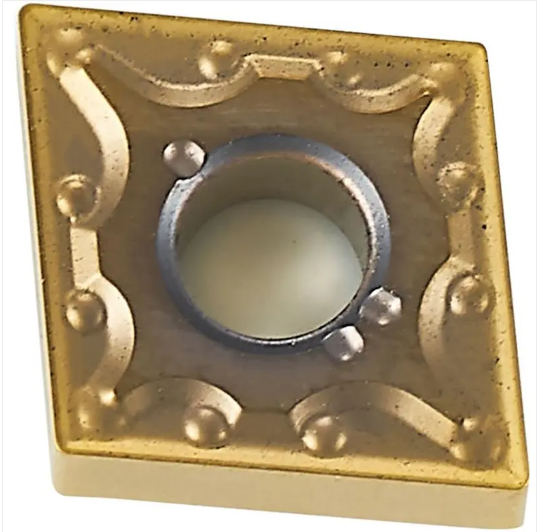
CNC blade wear, abrasive wear chips or some tiny hard points (such as carbides, oxides, etc.) and impurities (such as sand, oxide scale, etc.) on the surface of the workpiece, as well as adhered built-up edge fragments, etc., on the CNC blade A kind of mechanical wear caused by grooves on the surface. For high-speed steel tools with low speed and low cutting temperature (such as broach, die, tap, etc.), it is the main cause of wear.
Adhesive wear forms fresh surface contact under the action of positive pressure and cutting temperature between the CNC insert flank surface and the workpiece surface and the CNC insert rake surface and chips. When the contact surface reaches the interatomic distance, adsorption bonding occurs. The station nodes are gradually sheared, torn and taken away by the workpiece or chips, and adhesive wear occurs on the surface of the CNC blade. Adhesive wear is one of the main causes of carbide wear when cutting at moderate to low cutting speeds.
Diffusion wear occurs under high temperature and high pressure. Certain chemical elements in the CNC blade material and the workpiece material diffuse into each other in the solid state. That is, elements such as Ti, w, and Co in the cemented carbide diffuse into the steel, while Fe and C in the workpiece Elements such as these diffuse into the CNC blade, causing the hardness and strength of the blade surface to decrease, the brittleness to increase, and the tool wear to intensify. This is diffusion wear, which is one of the main reasons for the wear of carbide tools during early cutting at high temperatures (800-900°C).
Generally, the diffusion speed of W and Co is faster than that of Ti and Ta, so the high-temperature cutting performance of YT type cemented carbide is better than that of YG type. Phase change wear When cutting with high-speed steel tools, when the cutting temperature exceeds its phase change temperature (550 to 600°C), the metallographic structure of the CNC blade will change, causing the hardness to decrease and the wear to accelerate. Therefore, phase change wear is One of the main causes of high-speed steel CNC blade wear. Chemical wear. At a certain temperature, the media around the cutting area, such as air, cutting fluid, etc., chemically react with the tool material to form some loose and fragile compounds. These compounds are easily cut and The workpiece is scratched and taken away, causing CNC blade wear.
Post time: Jan-22-2024